Have you ever wondered what's the best way to line pans with parchment paper? What about square or rectangular pans? Or round cake pans? In this post I'm sharing all of my tips - including detailed instructions and a video! - for how to easily line baking pans of all different shapes and sizes with parchment paper.
Jump to:
- What is parchment paper?
- Do I need to grease parchment paper?
- How to Line a Baking Sheet with Parchment Paper
- How to Line a Round Cake Pan with Parchment Paper
- How to Line a Square Baking Pan with Parchment Paper
- How to Line a Rectangular Baking Pan with Parchment Paper
- Video: How to Line Baking Pans with Parchment Paper
- Comments
I get the same question every time I share a behind-the-scenes baking video in my Instagram story: how the heck do you line baking pans with parchment paper so neatly?! The short answer is through a lot of trial and error and years of baking experience. You may already know that the seemingly simple task of placing parchment paper into a baking pan is easier said than done, especially if your parchment paper keeps rolling up on you. Plus, a quick internet search with yield a thousand tutorials for a thousand different ways to line your pans. Guess what: I've tried them all so that you don't have to! And in doing so, I've discovered fool-proof methods for lining baking pans of all shapes and sizes.
So, without further ado, here's my long-awaited, much-anticipated tutorial for how to line pans with parchment paper! (And don't miss the video at the bottom of this post that shows exactly how I do it!)

What is parchment paper?
Parchment paper is paper that's been coated with silicone to provide a food-safe, non-stick surface that's also heat resistant*. It is a staple in a baker's kitchen and has many uses, including lining baking pans and layering between stacked baked goods so that they won't stick together. Parchment paper helps to promote even baking, reduces spreading (great for baking thick cookies), and keeps desserts from sticking to the pan.
I highly recommend buying pre-cut sheets of 12 in. x 16 in. parchment paper and storing them flat (rather than on a roll). This is the perfect size for lining half sheet pans and 9 in. x 13 in. pans, and it can be easily trimmed down for use with smaller pans. And there's nothing more frustrating than parchment paper that keeps rolling back on you while you're trying to line your pans, so storing the paper flat will make your life so much easier.
In some cases waxed paper or aluminum foil can be used in place of parchment, but these are not all-around substitutes for parchment paper. Waxed paper is coated with paraffin wax, so it is not heat resistant and should not be used to line pans that will go into the oven. Aluminum foil lacks the non-stick coating of parchment paper, so it won't help your desserts to be easily removed from their pans as parchment will.
*Most brands of parchment paper are heat-resistant to temperatures above 400ºF, but be sure to check the packaging of your paper, as this can vary.
Do I need to grease parchment paper?
Nope! Parchment paper is already non-stick, so there's generally no need to grease your parchment paper. And if you're baking cookies, greasing the parchment paper will likely cause your cookies to overspread and become greasy, so definitely skip the grease. With that said, if the recipe you're using says to grease the parchment paper then you may want to do so, especially if it's your first time making the recipe.
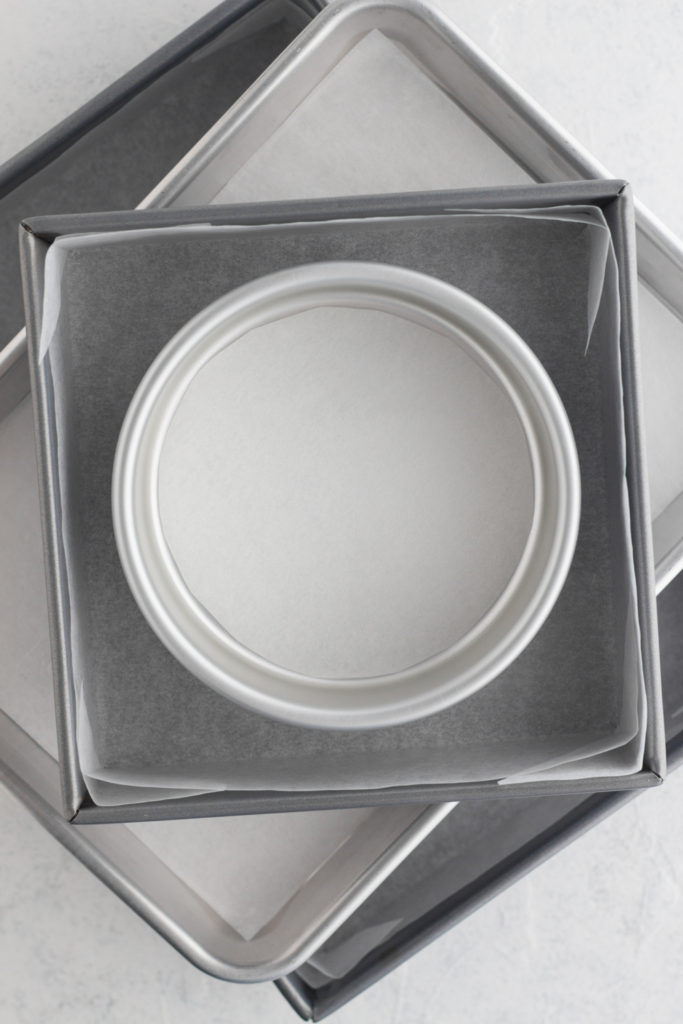
How to Line a Baking Sheet with Parchment Paper
Baking sheets are the easiest type of pan to line with parchment, so this will be a breeze!
- If you're using 12 in. x 16 in. parchment paper sheets to line a half baking sheet, then your parchment is already sized for your pan and all you need to do is place the sheet onto the pan.
- For smaller baking pans, simply trim down the parchment paper to a rectangle that fits the bottom interior of the pan.

How to Line a Round Cake Pan with Parchment Paper
This method works for any size cake pan and will help to ensure that chunks of your cake don't stick behind in the pan after you turn the cake out onto a cooking rack. Note: You probably still want to grease the interior sides and edge of your cake pan to ensure that your cake doesn't stick to the sides of the pan, since the parchment will only cover the bottom of the pan.
- Place a piece of parchment paper underneath your cake pan and use a pencil to trace an outline of the bottom edge of the pan onto the parchment paper.
- Use a clean pair of scissors to cut a circle just inside of the outline you drew (to accommodate the thickness of the pan, since you traced the exterior edge and the paper will sit on the interior of the pan).
- Place the circle of paper into the bottom of the pan.
Watch the video at the bottom of this post to see these steps in action!
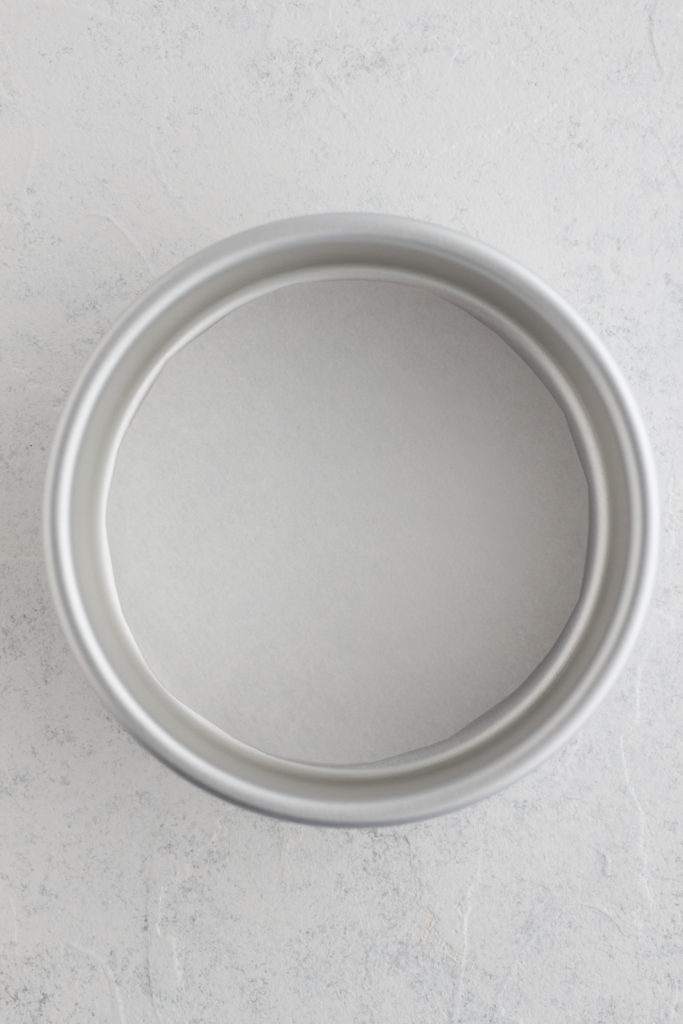
How to Line a Square Baking Pan with Parchment Paper
This method will work well for any size square pan, including the popular sizes of 8 in. x 8 in. and 9 in. x 9 in. I've seen many methods for lining square pans, but this method is my favorite. One popular method is to cut two strips of paper, each the width of the pan, and to lay them in the pan perpendicular to each other, but this method doesn't cover the corners of the pan and also uses extra paper, since you're covering the bottom of the pan twice. Other methods seem to require complex origami. This method keeps it simple and efficient.
- Place a piece of parchment paper underneath your pan. Lift up the edges of the paper to ensure that they reach up each of the sides of the pan, and use a pair of scissors to trim off any excess.
- Using the scissors, make a cut in the paper from each corner towards each corner of the pan. Remove the pan from atop the paper, and add another ½ inches to each of the 4 existing cuts (this will give you a little more wiggle room when shaping the corners).
- Place the paper into the pan and fold one flap behind the other at each of the 4 corners so that the paper fits neatly inside the pan.
- Using your fingers, crease the paper along the 4 horizontal edges of the pan. Then crease the paper along the 4 vertical edges so that the paper fits perfectly into all corners of the pan. (The sides of the paper may not lay flush with your pan, but they should be close (see photo above). Once you fill the pan with dough or batter the parchment will lay against the pan.)
Watch the video at the bottom of this post to see these steps in action!

How to Line a Rectangular Baking Pan with Parchment Paper
This method will work for any size rectangular pan, such as a 9 in. x 13. in pan, and it is the same method that I outlined above for lining a square baking pan.
- Place a piece of parchment paper underneath your pan. Lift up the edges of the paper to ensure that they reach up each of the sides of the pan, and use a pair of scissors to trim off any excess. (If you're using 12 in. x 16 in. parchment paper sheet to line a 9 x 13 in. pan., then you shouldn't need to trim your paper.)
- Using the scissors, make a cut in the paper from each corner towards each corner of the pan. Remove the pan from atop the paper, and add another ½ inches to each of the 4 existing cuts (this will give you a little more wiggle room when shaping the corners).
- Place the paper into the pan and fold one flap behind the other at each of the 4 corners so that the paper fits neatly inside the pan.
- Using your fingers, crease the paper along the 4 horizontal edges of the pan. Then crease the paper along the 4 vertical edges so that the paper fits perfectly into all corners of the pan. (The sides of the paper may not lay flush with your pan, but they should be close (see photo above). Once you fill the pan with dough or batter the parchment will lay against the pan.)
Watch the video at the bottom of this post to see these steps in action!
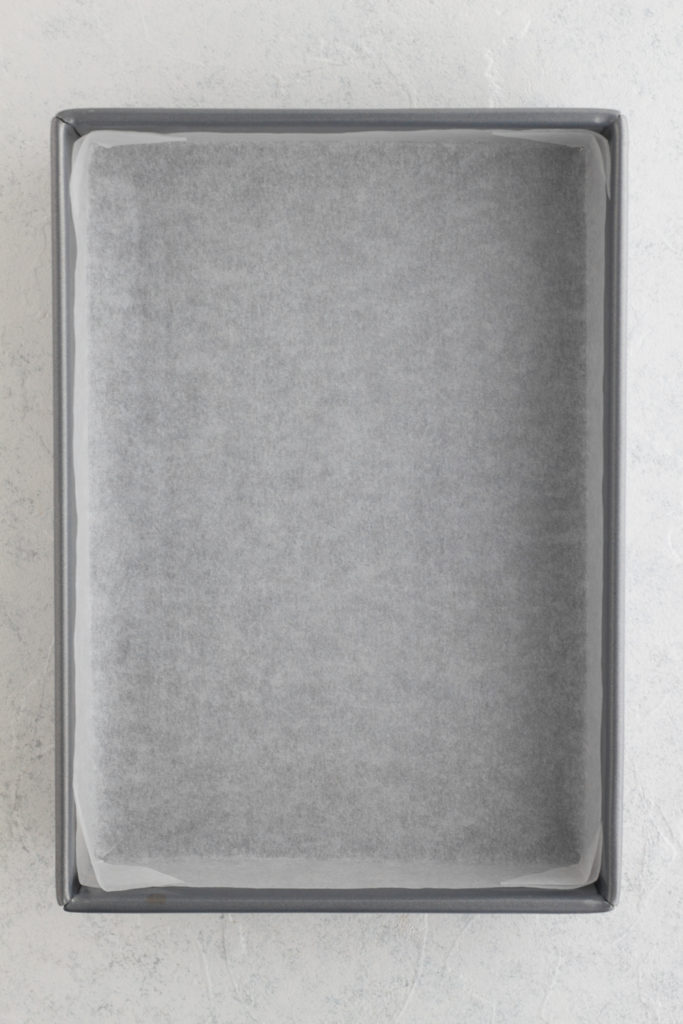
Video: How to Line Baking Pans with Parchment Paper
Do you have any other questions about parchment paper or about lining baking pans? Let me know in the comments!
DON'T FORGET TO PIN THIS BAKING TIP FOR LATER!
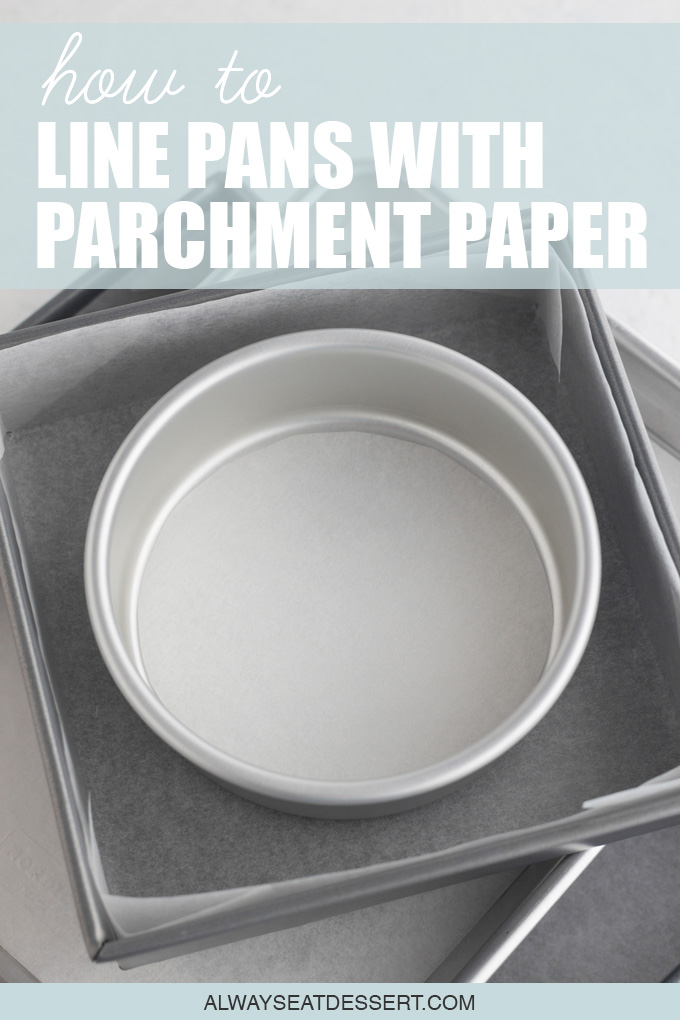


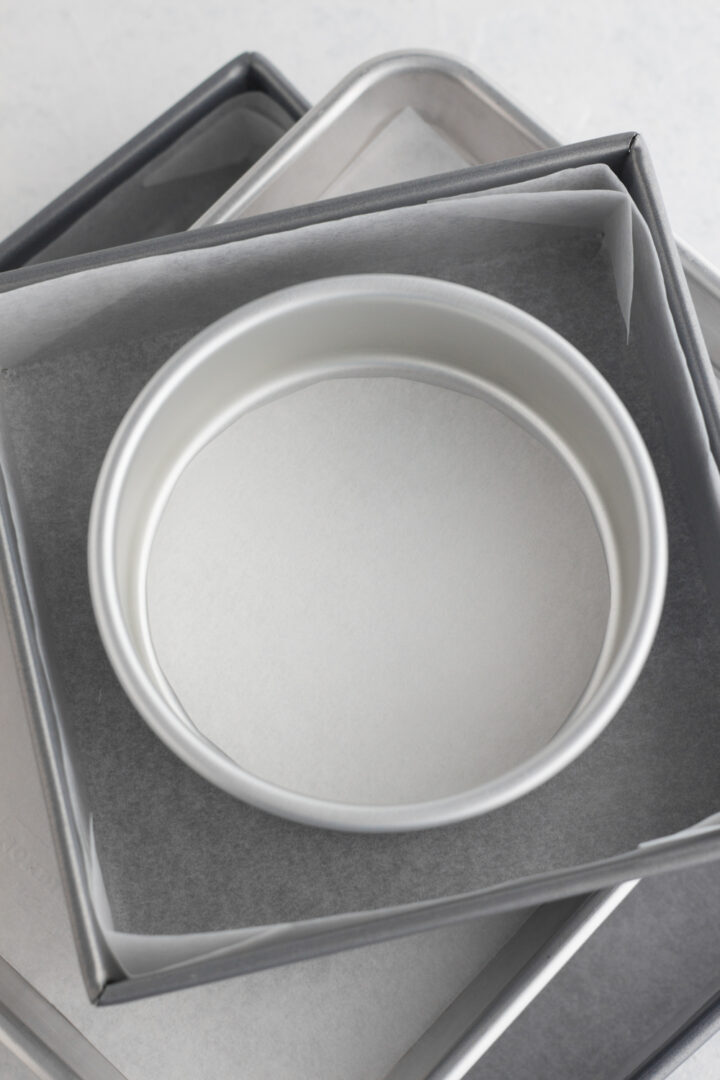

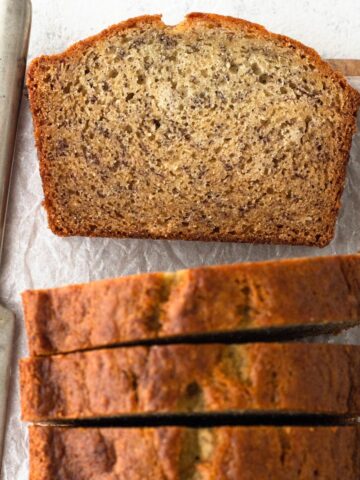
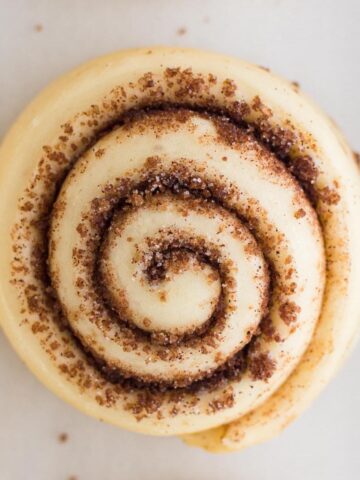





Ryan
The corner cuts for the square pans is brilliant. Thank you
Hazel Livingston
Do I always spray it when I use it?
Allison Ferraro
Hi Hazel! There's no need to spray your parchment paper. In fact, I never do. It's naturally non-stick, and spraying/greasing the paper could negatively impact your baked goods (for example, it would cause cookies to spread too much).
- Allison
Dorothy Hanks
Why did my parchment paper disappear after baking pumpkin bread in my bread pans?
Allison Ferraro
Hi Dorothy! I have not experienced this and cannot say for sure, but my guess is that your parchment paper actually stuck to the bottom of your loaf and became so soft and transparent that you didn't realize it was there. A very wet dough, like pumpkin bread dough, that bakes for a long time could cause this to happen.
- Allison
Irene Cook
Love your helpful hints/information. Thanks a bunch, Irene